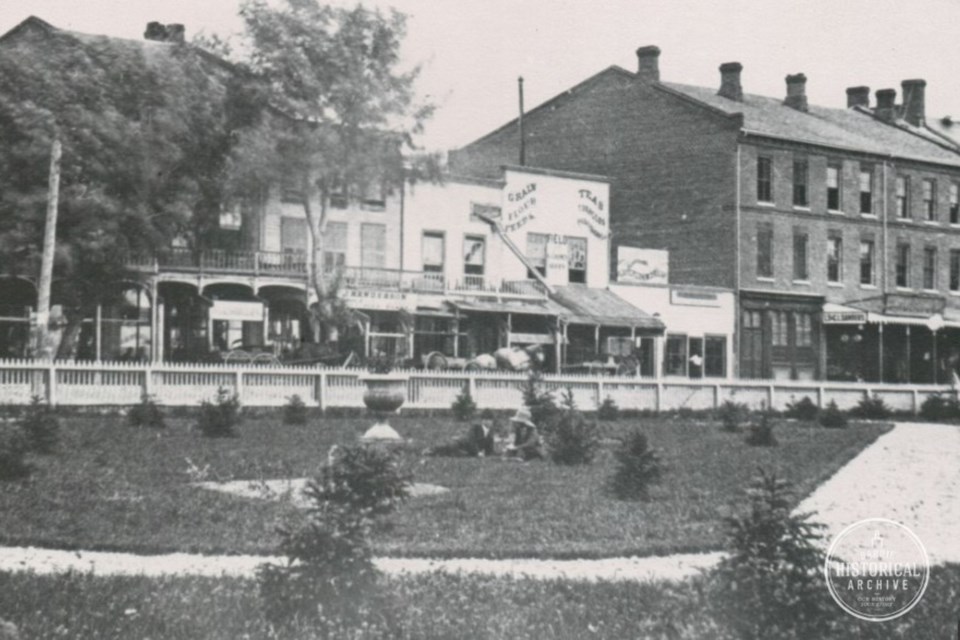Editor's note: The following is Part 2 in the series. To read Part 1, click here.
The tiny community of Brentwood, just west of Barrie, is a quiet place today. Imagine then how it must have been in 1870 when roads were poor and the area was little more than farmland and thick bush.
Of course, the Northern Railway did pass through the hamlet at the time, but the station was considered a flag stop, which meant that passing trains would only stop there if waved down.
In 1870, Brentwood had at least two taverns, which may seem quite surprising. Taverns of that era were not necessarily the standalone hotel type of businesses we might think of. In fact, in rural areas they were more likely to be located at a farm as a way for the farmer to make some extra money.
It was against this backdrop that the second murder in 15 months occurred at Brentwood and shocked the county.
Robinson Moore was a 60-year-old tavern keeper in 1870 and a bit of a character by all accounts. You would have to be if you wanted to sling alcohol in the wilds of the Ontario woods.
Moore’s actual trade was that of a shoemaker, but tavern-keeping likely supplemented his income quite nicely.
However, selling liquor in this frontier place was not without its hazards.
Drunkenness and rowdyism were always a part of the tavern keeper’s lot. A man engaged in this kind of business had to be mindful of the law as well. In fact, in the spring of 1870, Robinson Moore was still smarting after being reported and fined for selling liquor on a Sunday.
Robinson Moore was still stewing about the affair when a young man arrived at the wrong place at the wrong time. Unfortunately for him, he looked very much like the person who had reported Moore’s liquor infraction.
The crime was brutal and was widely reported in numerous news publications. Unfortunately, the victim’s name was a rather unusual one and was given a different spelling in each article, making it difficult to ascertain who he really was.
His name was William Breckinridge, Brackenread or Breckinreed. Take your pick. This young man, in his mid-20s, had just finished winter employment on Manitoulin Island, where he had been engaged in lumbering there for Lyon & Co.
On May 8, 1870, young William and his work companion, Will Read, were walking through the forest near Brentwood. The Northern Railway took them as far as Collingwood, but they needed to connect with the Great Western Railway in order to get to Trafalgar, Ont., near Oakville, to be paid.
A quantity of whisky was shared between the two men. When the pair reached Brentwood, William decided that he needed two things: more whisky and lodgings for the night. Being interested in none of that, Read carried on and left William behind.
When William knocked on the door of the Moore tavern, he was visibly drunk. Moore refused him service and, after closing the door, he began to wonder if this was a man called Lee, who had reported him earlier. Moore sent two friends out to investigate.
Once Robinson Moore was assured that William was likely the same Mr. Lee who had turned him in to the authorities, he was surprised and very angry. He told his two friends that he would “knock the devil out of“ the supposed Lee if he returned.
William did come back. Robinson Moore admitted to turning William away a second time, but nothing more.
At dawn, the savagely beaten body of William was found in a ditch just across from the Moore tavern. Ten feet from the tavern door was a large pool of blood.
It was not long before Robinson Moore was arrested for the murder and placed in the Barrie Jail.
In October 1870, a two-day trial was held.
Some damning evidence was presented. A witness claimed to have seen Moore “drag something that looked like a body” from his tavern that night. Another said that Moore had asked him to forget about Moore’s grudge against Lee.
A sword was found in the tavern, and it was suspected to be the murder weapon, although it could not be proven.
In the end, Robinson Moore was found not guilty. The judge, however, did not seem convinced and remarked that he “could only account for the verdict on the ground that the medical evidence failed to satisfy” the jury.
Two murders, two verdicts. One not guilty and one manslaughter conviction, neither of which brought the hangman to Barrie.
Each week, the Barrie Historical Archive provides BarrieToday readers with a glimpse of the city’s past. This unique column features photos and stories from years gone by and is sure to appeal to the historian in each of us.

